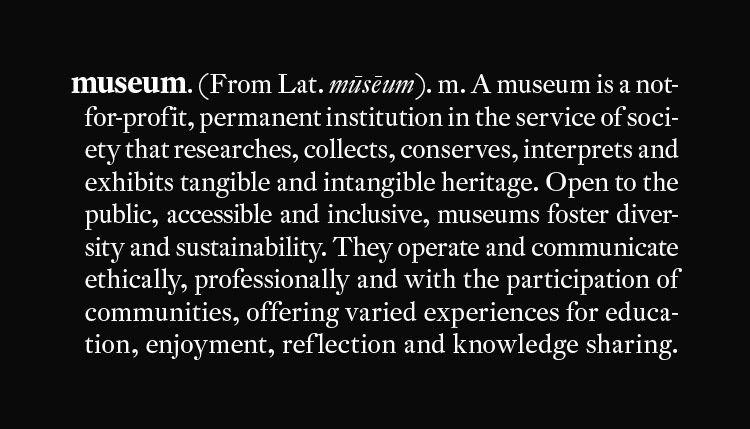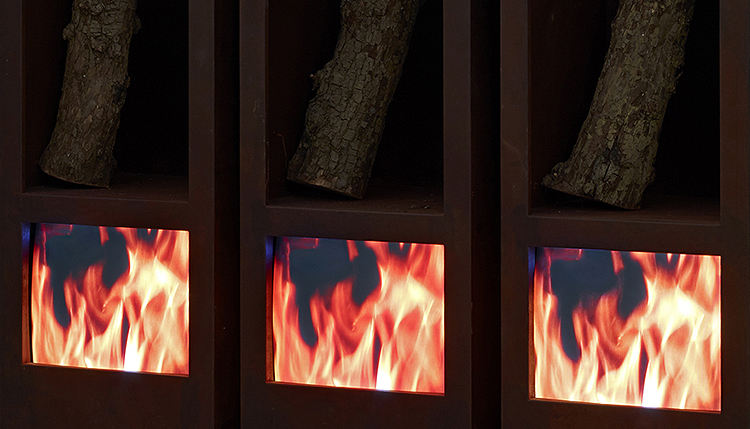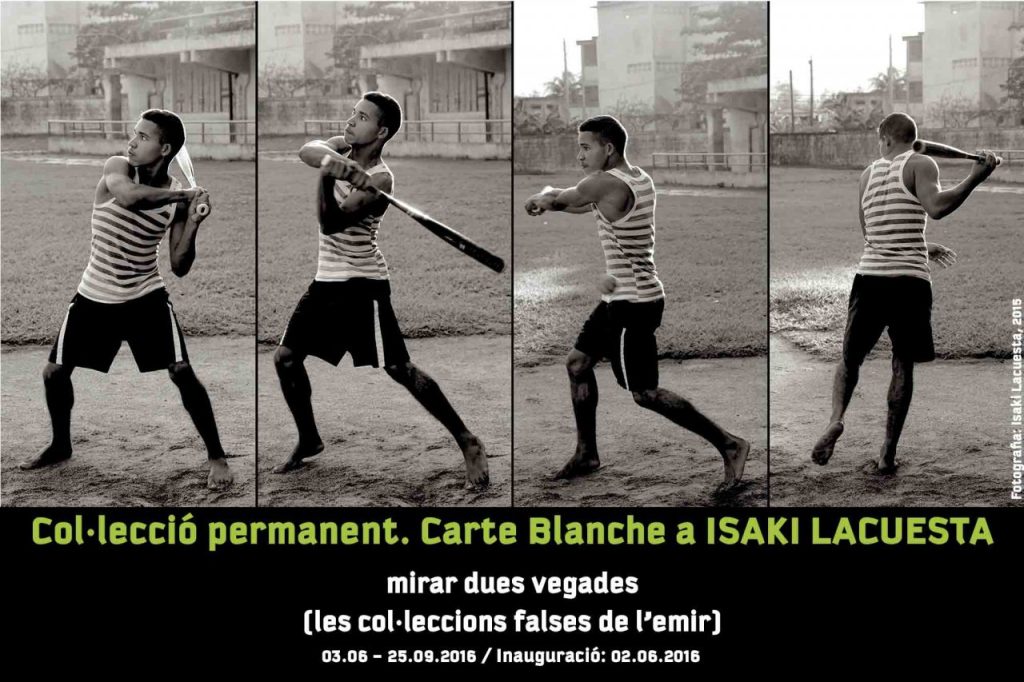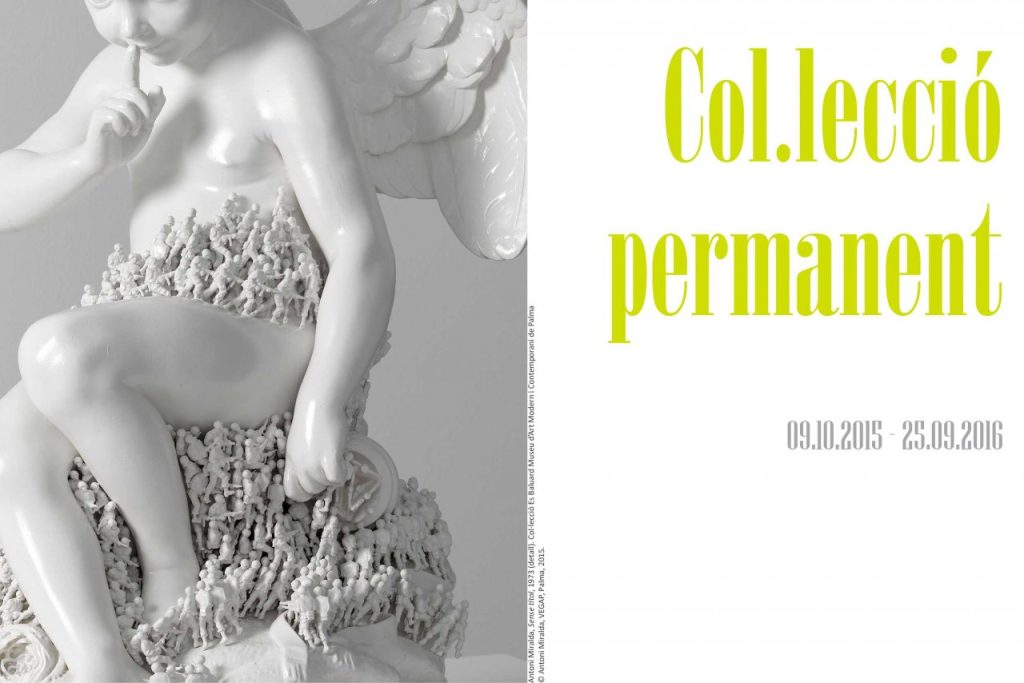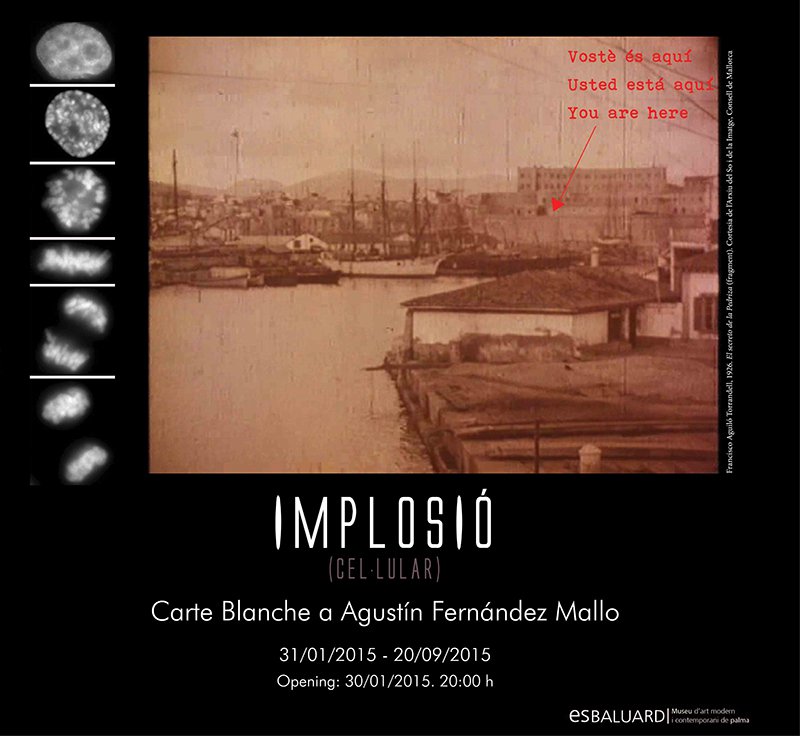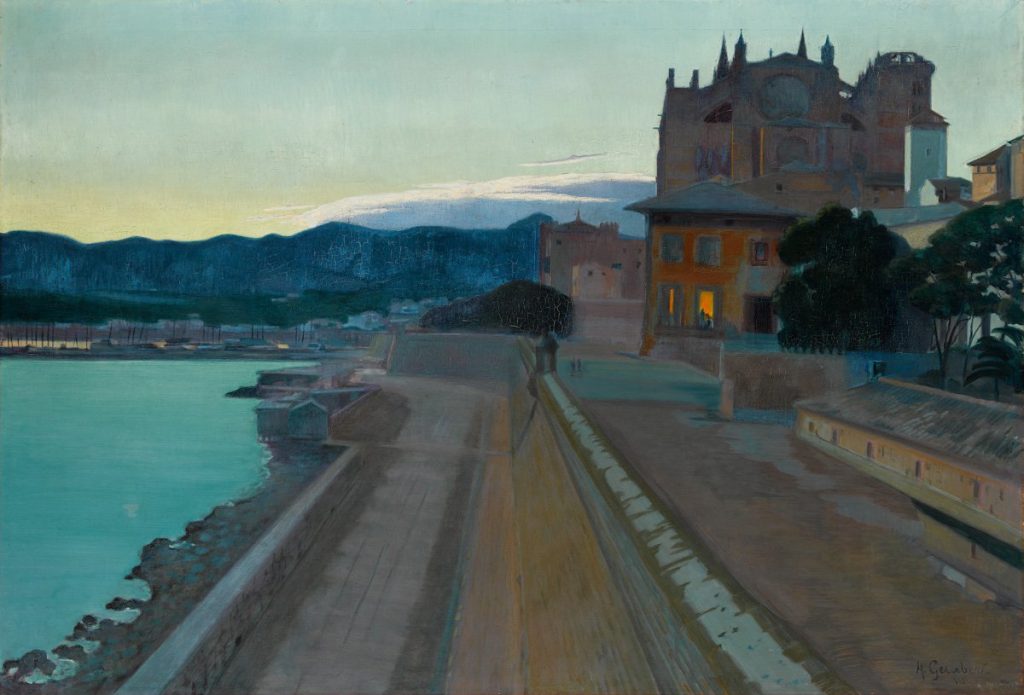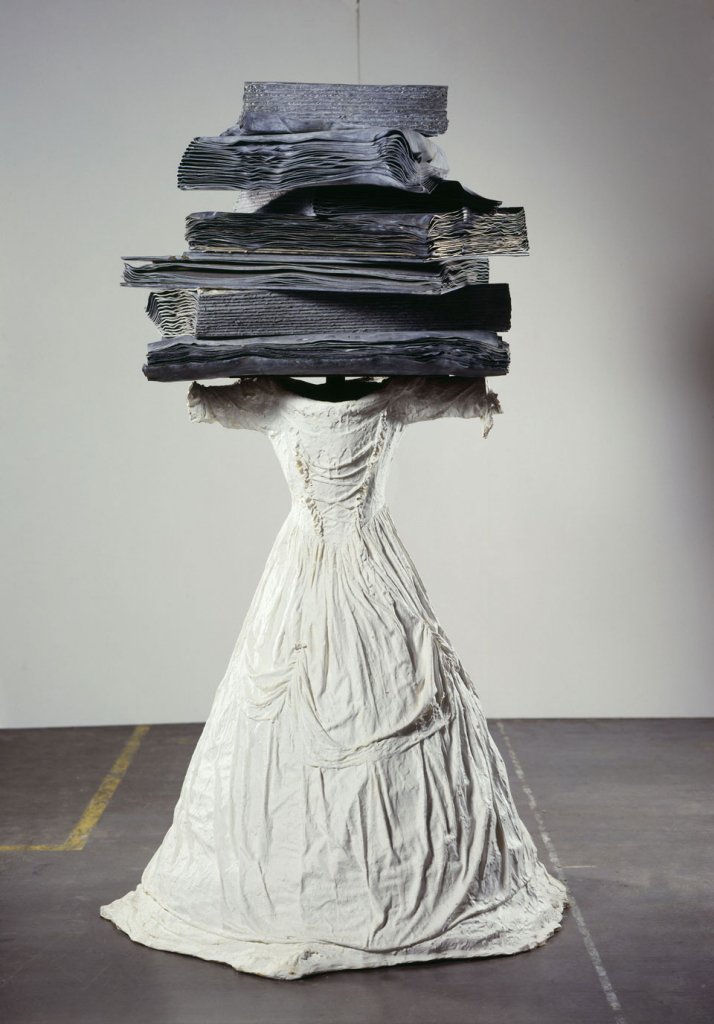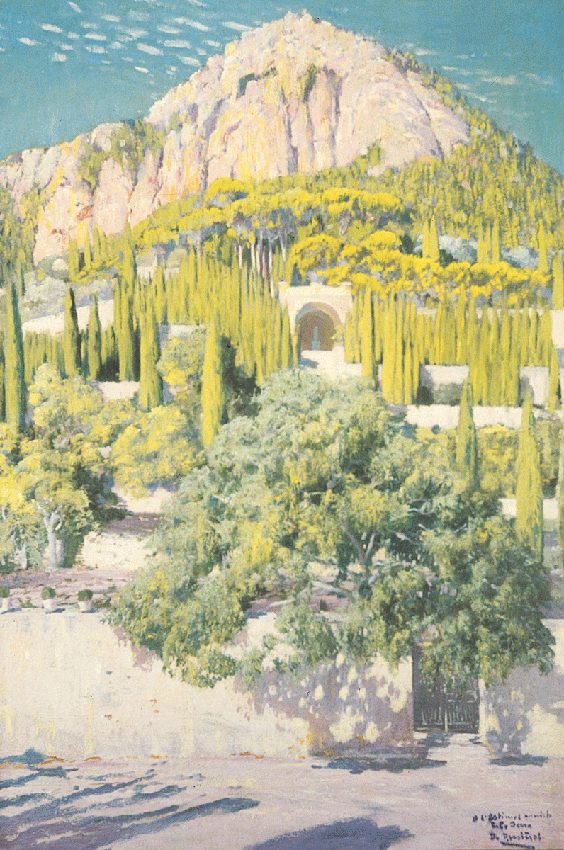
- Artist:
- Santiago Rusiñol
- Date:
- 1903
- Technique:
- Oil on canvas
- Dimensions:
- 83 x 56 cm
- Origin:
- Es Baluard Museu d'Art Contemporani de Palma, Serra Collection long-term loan
- Registration number:
- 155
- Exposed:
- No
The different periods that Santiago Rusiñol spent on Mallorca between 1893 and 1923 illustrate the fascination this man of letters and painter felt for the island. His special predilection for the gardens of Valldemossa – Son Moragues, Son Mossènyer, Sa Cartoixa and in particular, the gardens of the Sa Coma estate – is well known. Son Moragues. Sa Muntanyeta belongs to an estate which was owned by the Archduke Ludwig Salvator at the time. He made two versions of this small mountain, the work present in the Es Baluard Collection, and another entitled Font de Minerva (Fountain of Minerva), reproduced in the 1914 edition of Jardines de España.
In Son Moragues. Sa Muntanyeta the intense light of Mallorca penetrates the garden, and marks out a present time for us, a moment without return, defined by the fleeting clouds, the time marked by the sun in the inclination of the shadows in the foreground, and the silhouettes of the cypress trees, common in funerary symbolism. It reveals a silent, resting and solitary garden to us, contemplated from a high viewpoint. The absence of the human figure is remarkable, with only the trace of it present, which we can recognise through the existence of constructions, a fence and plant architectures in the landscape.
In the paintings of gardens from this period, one can see that Rusiñol was seeking new proposals, based on a careful study of things natural, and on the other hand, the lyricism revealed by the artist’s temperament: his emotions, fears and uncertainties due to the passage of time, a key theme in the work of Rusiñol. The painter found a personal style, eschewing traditional compositions, and firmly influenced by Japanese prints.
M.G.
Born into a family of textile manufacturers, Santiago Rusiñol was educated to carry on with the family business. But he rejected his family’s insistence, to devote himself in full to his vocation as a painter. His painting was no radical break, but rather he reconciled the rural naturalism of his youth with certain aspects of Impressionism – fleeting instantaneity, subtlety in the treatment of the atmosphere, influence of the Japanese print – along the same lines as other artists contemporary to him.
One of his most significant periods took place in Paris; he soon became one of the most-recognised figures and most-pronounced personalities of Modernism, contributing to the definition and development of this genre with his canvases, which suggest an intimate, highly personal universe, with incursions into several literary genres – notably his theatre work – and with his role as a promotor of the artistic scene through activities he organised in Sitges and in relation to the Els Quatre Gats café in Barcelona.
Rusiñol used painting and literature to project an introverted, melancholy personality, which is expressed in his painting and which he conceals under an appearance of frivolity and extroversion.
M.G.
